

European
Nuclear Society
e-news
issue 47: February 2015
The second half of 2014 was marked by the strong winds of change that blew through the corridors of power in Brussels. The election of a new Parliamentary Assembly was followed by the nomination of a new EC President, Jean-Claude Juncker, and a new President of the European Council, Donald Tusk. President Juncker wasted no time in nominating his team of Commissioners and Vice Presidents. Then he outlined the main priorities of his administration, which include an EU Energy Union, a European Energy Security Strategy, a €315 billion EU Investment Plan, and intensified action in the fight against climate change. Maroš Šefčovič was nominated the first ever Vice President for Energy Union, and Miguel Arias Cañete became the first ever Commissioner for Energy and Climate Change. By combining these two portfolios under the responsibility of one Commissioner, President Juncker showed unequivocally how, according to the new EC’s strategic vision, the two are inseparable. These institutional innovations represented a significant change in leadership style and structure, and gave fresh impetus and a renewed sense of purpose to the EC, the European Parliament and the European Council. The political and institutional landscape in Brussels was redrawn.
The European nuclear community has long promoted the climate change credentials of nuclear energy. The declaration that climate and energy policy are inextricably linked will provide that community with a platform for promoting the environmental advantages of nuclear energy even more forcefully than before. Nevertheless, any new political configuration inevitably creates uncertainty. Radical change is often greeted with a healthy dose of scepticism and invariably provides more questions than answers. What part would nuclear play in Europe’s energy future following these changes? What new blueprint for action would translate vision into reality? And how would it impact upon those working in the frontline of nuclear research and innovation? Of course, recent events in Brussels might not have been a source of great enthusiasm for everyone, especially those with a lack of interest in - or natural suspicion of - politics and politicians. But total indifference to change, when that change might impact upon our working environment or redesign the priorities that drive our work, is not an option.
A number of President Juncker’s major priorities, however, are of particular interest to the wider nuclear community. The EU Energy Union project, for example, rests upon five pillars: to enhance security of energy supply, to build a single internal energy market, to increase energy efficiency, to decarbonise the economy and - last but not least - to boost research and innovation.
The much publicised EU Investment Plan features a number of nuclear energy-related investment projects on its list of priorities. These reflect the contribution that nuclear energy will continue to make to socio-economic growth, environmental sustainability, and research and innovation in the EU. Among the most notable priority projects listed are three nuclear new build projects in the UK (Hinkley Point C, Moorside and Wylfa), as well as Poland's first-ever nuclear power plant construction programme. Investment in research into innovative new technologies will ensure a new generation of even safer, more efficient and more environmentally-sustainable reactors. These reactors will help meet the EU's security of supply, climate change and competitiveness targets.
Close scrutiny of the EC’s research and innovation mission, as presented by the new Commissioner for Research, Science and Innovation, Carlos Moedas, reveals both the ambition and the scope of the task ahead. The objectives of the EC’s research and innovation policy are as follows: to ensure that research funding, especially Horizon 2020, contributes to jobs, growth and investment; to promote the excellence of science and research at both Member State and EU level; to ensure that funding is better used; to guarantee that EC proposals are based on scientific fact and to encourage the private sector to apply research in order to meet today’s great societal challenges.
As is the case with every new administration, it will have to prove itself. Only time will tell whether its bold statements of intent will prove to be a genuine springboard for real progress, or whether they will return to haunt those that made them. Will that wind that blew through those corridors of power find its way to the research laboratories, university faculties, hospitals or the boardrooms of industry? Will it prove to be a providential wind, or will it gradually lose its force and direction until it is reduced to nothing more than a gentle breeze?
|
|
http://www.euronuclear.org/e-news/e-news-47/presidents-contribution.htm


In December 2015, a European country, France, will host the twenty first ‘Conference of the Parties on Climate Change.’ This event, now commonly referred to as COP 21, has given rise to the ambitious hope that the 192 participating heads of states, or their representatives in Paris Le Bourget, will reach a worldwide climate agreement. With its wide-reaching scope and the number of signatories involved, such an agreement should increase the dynamics started by the Kyoto Protocol that was signed in 1992.
Nuclear energy must be present at such an important event for a number of reasons, which our readers will easily recognize:
Electricity generation is an important contributor to CO2 emissions. 40% of CO2 emissions emitted by the energy sector are due to electricity generation.
Today, 70% of the world’s electricity comes from fossil fuels. Fossil fuel generation is increasing more than any other technology. Scientists such as those on the International Panel on Climate Change (IPCC) have repeatedly stated that at least 80% of the world’s electricity must be low-carbon by 2050 to keep global warming within a maximum increase of 2°C. This is a big challenge.
Nuclear energy is a carbon-free electricity generation technology. It is part of the solution to the important problems generated by climate change.
A country has the right to choose nuclear in order to reduce CO2 emissions provided it maintains the high standards of safety promoted by the International Atomic Energy Agency.
|
Nuclear energy must be represented at COP 21, but it should not overdo it. Let me recall the motto coined by some NGO’s after our strong campaign for nuclear energy in the nineties: “Don’t nuke the climate”. This is why we must remain active, discreet and efficient at COP 21 in December. Many events will be organized by our member societies in Europe during the conference, as well as by our sister nuclear societies and organizations active on other continents. I hope that our readers will support and participate in these events, so that nuclear energy can be perceived in a non-aggressive way as a vital part of the solution. |
http://www.euronuclear.org/e-news/e-news-47/nuclear4climate.htm

Nuclear4climate is a grass roots initiative created jointly by the French Nuclear Energy Society (SFEN), the American Nuclear Society (ANS) and ENS. With the United Nations COP 21 climate talks due to take place in Paris, in December this year, this initiative is very timely. It has brought together nuclear scientists from all corners of the globe. Their efforts to promote the environmental credentials of nuclear energy are coordinated by around 60 regional, and national nuclear associations, as well as by scientific societies.
Nuclear4climate reflects the concerns and supports the central conclusion drawn by the majority of climate experts, namely that human activity has contributed directly to climate change. This conclusion was unequivocally stated in the peer-reviewed 5th Assessment Report published by the IPCC (Intergovernmental Panel on Climate Change). The International Energy Agency (IEA) also recognized this fact in a report that it published in November 2014, in which it states that nuclear energy has avoided the equivalent of two years’ worth of CO2 emissions since 1971.
Nuclear scientists know this. But it is important that we pool our resources and amplify our voice so that decision-makers - before, during and after the COP 21 talks - are left in no doubt that nuclear is part of the solution to fight climate change. The main objectives of the initiative are to promote this reality, to reinforce the sense of pride that the nuclear community derives from knowing that it is contributing to the future of the planet, and to ensure that the final protocol that emerges from COP 21 emphasises that all countries are free to choose nuclear energy as one of the available options for reducing CO2 emissions
If you want more information about the activities of Nuclear4climate visit the dedicated website hosted by FORATOM, where you can also follow the debate via the social media, and see what Dr. Pachauri, Chairman of the IPCC, says about climate and nuclear in a Youtube video.
http://www.euronuclear.org/e-news/e-news-47/PIME2015.htm


PIME, the conference on Public Information Materials Exchange, is the annual focal point for professional nuclear communicators all around the world. It is the only conference of its kind designed especially for communicators in the nuclear industry and research communities – a unique international meeting!
Key features of this years’ programme include:
Successful communications – getting your messages and tools right, with an insight into how to increase your impact by creating receiver-specific messages and a look at videos as communications tool;
Building a case for nuclear – how political and economic developments influence communications strategies;
A focus on opinion polls and how they can best be used in a communications strategy;
An opportunity to look beyond the nuclear sector and learn from other industries with presentations from the European Space Agency and Eurotransplant.
The PIME Award for Communications Excellence: Five shortlisted candidates will have an opportunity to display their campaigns and ‘sell’ them to PIME delegates during the conference and, ultimately, it is those delegates who will choose the winner of this year’s PIME Award for Communications excellence.
The countdown to PIME has started. There is still time to register your attendance, so go to the PIME website and REGISTER NOW.
Make sure you play an active role in the ongoing PIME debate about the present and future of nuclear communications worldwide.
MARK YOUR DIARY – Join us in Bratislava from 1 – 4 March 2015
PIME 2015 Conference Secretariat
organised in collaboration with:
http://www.euronuclear.org/e-news/e-news-47/RRFM2015.htm


This year the European Research Reactor Conference (RRFM) will be organised from 19 – 23 April in Bucharest, Romania.
All areas of the Nuclear Fuel Cycle of Research Reactors will remain a key focus of this years’ programme.
Furthermore delegates at RRFM 2015 will discuss:
Utilisation of research reactors
Innovative methods in reactor physics and thermo-hydraulics
New research reactor projects
Research reactor operation and maintenance
Safety and security of research reactors
Decommissioning and dismantling of research reactors and waste management
Following last years’ success and highlighting the important work done in the area, two technical sessions will be dedicated to Safety and Security of Research Reactors.
Ten keynote speeches on international topics will highlight projects of importance to the entire Research Reactor Community.
Further information on RRFM 2015 and the preliminary programme is available at www.rrfm2015.org
organised in cooperation with: |
||
 |
||
http://www.euronuclear.org/e-news/e-news-47/TopFuel2015.htm


TopFuel is an annual topical meeting of nuclear fuel experts from around the world. It is the occasion to discuss the challenges facing the developers and manufacturers of new high-performance nuclear fuels – fuels that will help meet current and future energy demand and reduce man’s over dependence upon CO2-emitting fossil fuels.
TopFuel 2015 will take place from 13 – 17 September 2015 in Zurich, Switzerland.
Switzerland is known for highest burn-ups and high-quality NPP operation as well as cutting edge fuel investigations – from hotlab to synchrotron investigations. TopFuel delegates will have the opportunity to visit some of the most interesting Swiss nuclear sites.
|
Organised in cooperation with: |
|||
|
|||
http://www.euronuclear.org/e-news/e-news-47/nene2015-report.htm


The Nuclear Society of Slovenia will organize the 24th International Conference Nuclear Energy for New Europe, from September 14-17, 2015, in the attractive maritime resort of Portorož, Slovenia.
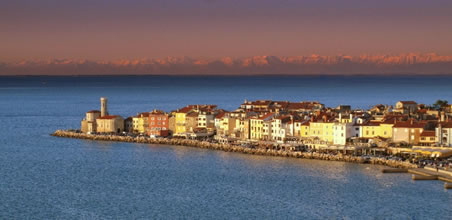
The conference is a traditional annual meeting of professionals from nuclear research and educational institutions, nuclear vendors, utilities and regulatory bodies. It attracts around 200 participants from more than 20 countries. The topics discussed range from reactor physics, thermal hydraulics, probabilistic safety assessment, severe accidents, nuclear fusion, nuclear power plant operation, nuclear materials, waste management, new reactor designs, nuclear legislation, education and public information.
The conference website URL is www.nss.si/nene2015/.
For more information please contact us by email: nene2015@ijs.si.
http://www.euronuclear.org/e-news/e-news-47/nucleopolis.htm


France is one of the world's most advanced nations in the domain of nuclear science and its applications. Among its various French regions active in the sector, Normandy offers numerous advantages in the fields of energy and health by combining high-level expertise and know-how developed through many years of experience in research, training and industry. So, 10 % of France’s Basic Nuclear Facilities are based in Normandy, a region that accounts for almost 10 % of the country’s total industrial jobs, and where a quarter of French nuclear companies have a branch office. In the Cotentin area alone (North West of Normandy), two 1300 MW EDF reactors are located. It is also the site of the future EPR reactor (Flamanville) and of AREVA’s La Hague fuel recycling plant. In this territory alone the nuclear industry provides more than 13 000 highly-qualified jobs, mostly stable jobs that cannot be relocated. Furthermore, in the urban conurbation of Caen the nuclear health sector employs around 1,000 jobs, including 800 researchers, research trainers and 150 PhD students.
In 2008 and 2009, two position papers led to the creation, on 17 September 2010, of the Norman centre of nuclear sciences and applications, NUCLEOPOLIS. Its founder and first president was Daniel GUERREAU who, three years later, handed over control to Serge BOUFFARD.

Today, Nucleopolis brings together in Normandy the nuclear expertise of several companies involved in research, training and industry – companies active across the entire nuclear science value chain, in particular in the fields of energy and heath and in the cross-cutting field of risk control. It consists of nearly 70 members, including renowned research and training organisations (GANIL, CEA, CNRS, ENSICAEN, Caen University, etc.), major industrial companies (AREVA, EDF, GDF-SUEZ and DCNS) and a network of successful SMEs. This know-how is the result of extensive experience gained in major nuclear installations such as the AREVA La Hague recycling plant, the Flamanville reactors, GANIL and future innovative projects such as ARCHADE, SPIRAL2 and AREVA Med.
The activities of Nucleopolis are guided by three strategic objectives aimed at providing a service for its member companies, the nuclear sector and the Norman territory. Nucleopolis has one mission: to enhance the economic development of the nuclear sector and, consequently, to stimulate employment. Its objectives are as follows:
to provide companies with quality service and innovation: the aim here is to make companies more competitive by supporting them with their development projects, by helping them target new markets and promote innovative strategies. Nucleopolis proposes four types of service to its member companies, either directly or through subcontracted support: network management, market itinerary (i.e. to allow companies to adapt to the specific aspects of the nuclear market, help them win new markets, simplify their export formalities and their relations with contracting authorities...), skill itinerary (consolidate the know-how of companies and provide training in support of their employees), and, finally, innovation itinerary (develop innovative capabilities by fostering new ideas and projects, by communicating the innovative capabilities of research organisations, by acting as interface with laboratories outside Normandy and by helping with the search for partners, funding, etc.).
to be the reference regional player for the nuclear industry and to make Nucleopolis the gateway of the Normandy nuclear industry in order to guide companies looking for services through labyrinthine existing structures, while at the same time offering regional communities its knowledge of the sector and its expertise.
To be the ambassador for Normandy’s excellence in the nuclear domain by promoting the nuclear industry, its know-how and skills in Normandy, and by increasing its legitimacy outside the region; in other words, to take part in national and international events and participate in national bodies (for example, the CSFN (the Strategic Committee of the French Nuclear Industry), to help make the region more attractive and, finally, to develop the Nucleopolis "brand".
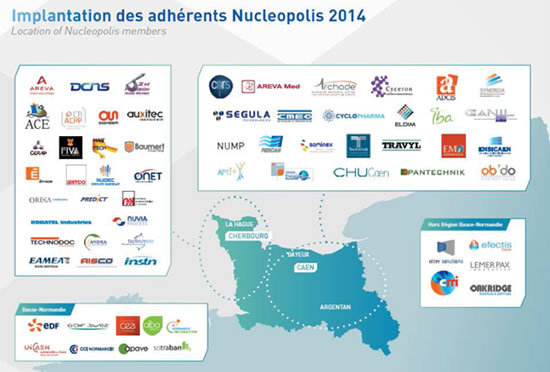
Since its creation, Nucleopolis has received active support from governmental institutions: the State, the Lower Normandy Regional Council, the Manche General Council, the Calvados General Council, the Cherbourg Urban Community and the Caen la Mer conurbation. It also receives support from Europe through FEDER, the European Fund for Economic and Regional Development.

Contact : Stéphane Bresson : +33 (0)231452968
www.nucleopolis.com
http://www.euronuclear.org/e-news/e-news-47/sfen.htm

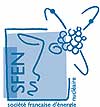
The French Nuclear Society (SFEN) and its Turkish counterpart, the Turkish Nuclear Engineers Society (NMD – Nükleer Mühendisleri Dernegi), signed on Monday, January 19th in Ankara, Turkey, an agreement for cooperation in the nuclear field.
SFEN was represented by its vice-President, Christophe Béhar while the NMD was represented by its President, Prof. Dr. Cemal Niyazi Sokmen. The cooperation agreement was signed at the French Embassy in Ankara in presence of the French Ambassador, H.E. Laurent Bili, the Under-State Secretary of Energy Mr. Metin Kilci, the President of the TAEK Nuclear Safety Authority, Mr. Zafer Alper and other representatives of the Turkish government, universities and the industry (AREVA, GDF-SUEZ).
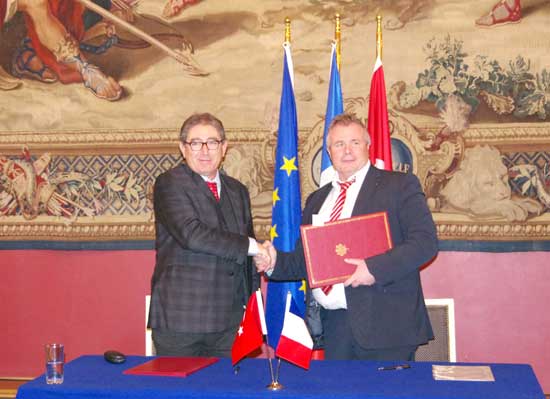
Prof. Dr. Cemal Niyazi Sokmen & Christophe Béhar signed the convention in Ankara
This agreement is fully in line with the cooperation between France and Turkey in the nuclear field. Its general objective is the advancement of science and technology in the field of nuclear energy. The aim is to share knowledge on nuclear energy between experts and professionals of each country, promote exchanges and contribute to support the development of nuclear energy in Turkey. It also includes the exchange of information on conferences and seminars organized by each society.
Turkey officially launched its nuclear program in 2007. Two nuclear power plants construction projects are currently underway. One of them is carried-out by a French-Japanese-Turkish consortium being set-up of GDF Suez, Mitsubishi Heavy Industry, Itoshu and EÜAŞ, the largest electric power company in Turkey. It includes the construction of 4 ATMEA-1 reactors in Sinop (Coast of Black sea).
The French Nuclear Society (SFEN) is a non-profit, international, scientific and educational organization. Founded in 1973, SFEN includes 3,500 members, researchers, engineers, professionals, physicians working mostly in the nuclear field. Its purpose is to promote the progress of nuclear science and technology and to contribute to the public knowledge about this form of energy.
The Turkish Nuclear Engineers Society is a non-profit organization gathering 180 nuclear engineers. Established in 1992, its main missions are to support the peaceful use of nuclear energy in Turkey and to support the training and education in Nuclear Engineering field.
Isabelle Jouette
+33 (0)1 53 58 32 20
isabelle.jouette@sfen.org
http://www.euronuclear.org/e-news/e-news-47/sne-news.htm

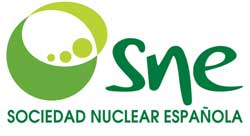
The 40th Annual Meeting of the Spanish Nuclear Society (the Spanish acronym is SNE) was held from 1 – 3 October in Valencia, Spain. This year over 600 professionals took part. There were 33 technical sessions on the programme, which presented the industry’s current projects and advances in the form of 300 papers dealing with areas such as nuclear safety, radiological protection, nuclear fuel, plant operation and maintenance, engineering, R+D, communications, etc.
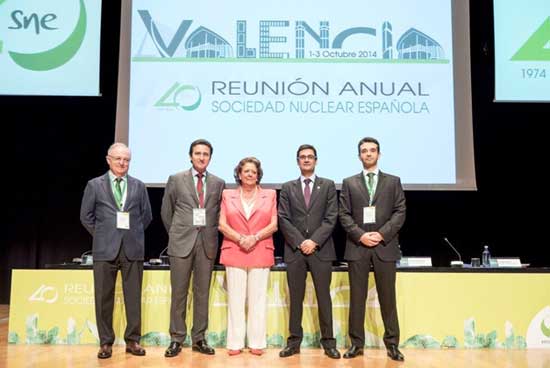
Two monographic sessions for experts were organised. The first one, on the subject of improving emergency management, discussed the current status of implementation with the launch of an Alternative Emergency Management Centre (CAGE) at each site before the end of 2015. Also debated was the creation of a National Emergency Support Centre (CAE) with specialized personnel and resources available to provide assistance within 24 hours, and improved emergency communications systems. All these improvements are already being planned or implemented according to a national action plan, thereby confirming that significant advances can be made and results achieved by working together towards a common objective. The second session dealt with waste management where traditional techniques have given way to new methodologies for volume reduction by means of plasma and its radiological declassification.

Two courses were also offered: one on electrical network stability and the other focusing on innovative contracting models for new nuclear power plant projects.
Twenty-nine stands representing various companies in the industry were present at the exhibition and, as an innovative feature this year, a special meeting was held with 14 firms based in the Community of Valencia, during which business opportunities and possibilities for the sector were presented.

During a Special Session SNE’s future for the next 40 years, as well as its strong current position, were discussed. Nuclear energy is indispensable, but since other energy sources are too it is important that they are competitive and safe for everyone’s benefit. In fact, we can depend on their qualified supervision thanks to our expert Nuclear Safety Council. The Temporary Centralised Storage or ATC (the Spanish acronym), thanks to its dedicated Science Park, is an opportunity for R+D, especially in the field of fuels. SNE continues to work to reach its goal of disseminating knowledge quickly and extensively to the public by means of rigorous and transparent communications through new social networking technologies.
So, SNE’s future is quite promising. The sector is an active player in the international marketplace, where foreign sales of fuel account for 60% of the total market; nuclear equipment manufacturers make up 85% and engineering between 40 and 60%. Young nuclear specialists are well-prepared to take on future responsibilities because they already have the required technical, communications and dissemination skills in their professional DNA.
The following messages were highlighted at the closing session:
SNE will continue to demand a stable and predictable framework of regulations whilst measures designed to strengthen safety at Spanish nuclear plants are being implemented.
SNE will continue to support the long term running (for 60 years or more) of our nuclear power stations.
SNE is firmly committed to operational efficiency and flexibility, to the maintenance of a culture of safety, and to enhancing the public’s acceptance of nuclear energy by means of transparent communications, as mentioned earlier.
SNE is a not-for-profit organisation, founded in 1974 (the membership currently stands at approximately 1,000, which is made up of both individual professionals and institutional members), whose mission is to promote the awareness and the dissemination of knowledge with regards to nuclear science and technology.
http://www.euronuclear.org/e-news/e-news-47/sck-cen.htm

Elementary particles, and the quest to discover them, have never been ‘hotter’. The Higgs Boson became a global sensation, and the men who predicted its existence won the Nobel Prize for Physics. Now Belgian scientists are turning their attention to the next big thing: sterile neutrinos. With the help of French and British colleagues, they are using a revolutionary technology to record evidence that these particles exist.
Two French and two British universities, together with the Flemish universities of Antwerp, Gent and the VUB (the Flemish Free University of Brussels), joined forces in early 2013 with Belgium‘s Nuclear Research Centre (SCK•CEN, in Mol), to form a European research consortium. Together, they have developed a ‘neutrino experiment’. The project is called SOLID, which stands for Search for Oscillations with a Lithium6 Detector.
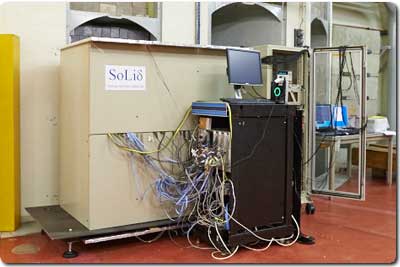
The scientists involved want to record sterile neutrinos. “These elementary particles may be linked to the particle whose discovery earned Belgian François Englert and Briton Peter Higgs the Nobel Prize for physics in 2013,” says Professor Nick van Remortel (UAntwerp). “If these new elementary particles are actually found, it will immediately answer many fundamental questions about the origin of mass and the stability of the universe.”
There is no doubt that neutrinos exist. These elementary particles were first discovered in the 1950s at a US nuclear reactor at Savannah River, South Carolina. They are also produced in vast quantities inside the sun. They are very difficult to record, however, because they barely interact with matter. Every second, about 50 billion neutrinos pass through every square centimetre of our bodies without us ever noticing.
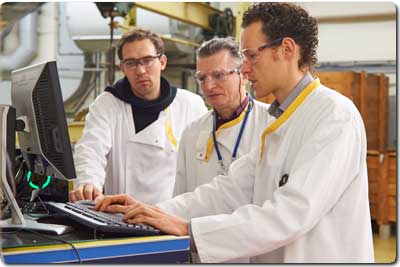
By 2016, scientists hope to build a neutrino detector, weighing over two tonnes, which will be used to look for these sterile neutrinos over a period of three years. The scientists, including several Oxford researchers, are using a new type of particle detector: one that is extremely sensitive to neutrinos. Van Remortel: “This absolutely revolutionary technology could even be used for the remote detection of nuclear activity worldwide — a very interesting way of verifying compliance with non-proliferation agreements.”
The particle detector will be built near the BR2 research reactor at SCK•CEN in Mol, Belgium. This reactor, which is responsible for a large proportion of the global production of medical radioisotopes used for imaging and cancer therapy, also appears to be ideal for carrying out fundamental research into the field of elementary particles.
"We are proud to be able to use our expertise and our BR2 facility — unique in this respect — to contribute to the success of this very exciting project", says Professor Eric van Walle, Director-General of SCK•CEN. “This search for sterile neutrinos shows that our institution can offer very interesting prospects for developing and expanding this type of fundamental research.”
The experiment has been made possible partly thanks to financial support from the Fund for Scientific Research Flanders, the Hercules Foundation and Belspo. “This project demonstrates that research centres such as SCK•CEN have top-level research facilities and technical expertise, allowing them to compete with the world’s major research institutions. This means we are well equipped for this race, because other consortiums around the world are also looking for sterile neutrinos,” added Professor Van Remortel.
BR2, short for Belgian Reactor 2, is one of the most powerful research reactors in the world. It is water-cooled and has been used since 1962 as a test reactor for fuels and reactor materials for various reactor types. BR2 is also one of the most important producers of medical radioisotopes used for diagnosis and therapy, including the most commonly used isotope, molybdenum-99. The reactor produces 25% of world demand every year, and up to 65% at peak times. BR2 is also used to irradiate silicon, a process which results in a semiconducting material of excellent quality. These semiconductors are essential components of the electronics in solar and wind energy systems and in hybrid and electric vehicles.
A neutrino is an elementary particle with no electric charge, produced in high-energy collisions between nucleons. Scientists suspect that neutrinos have almost no mass. Only very rarely do they collide with matter; most of the time, they simply pass right through it. Detecting ordinary neutrinos is hard enough as it is, but sterile neutrinos are even more elusive. Particle physicists believe that they may even be able to solve the mystery surrounding dark matter if they manage to observe sterile neutrinos.
Contact information:
University of Antwerp
Prof Nick van Remortel
nick.vanremortel@uantwerpen.be
+32 (0) 3 265 35 68, +32 (0) 475 84 16 01
Belgian Nuclear Research Centre, SCK•CEN
Prof Dr. Eric van Walle, director-general
Eric.van.walle@sckcen.be
014 33 25 90
Ghent University
Prof Dirk Ryckbosch
Dirk.Ryckbosch@UGent.be
+32 (0) 9 264 65 43, +32 (0) 494 84 21 58
Vrije Universiteit Brussel
Prof Petra Van Mulders
pvmulder@vub.ac.be
+32 (0) 2 629 36 23, +32 (0) 498 59 10 65
http://www.euronuclear.org/e-news/e-news-47/nia.htm

Over 1,400 nuclear industry professionals turned out in all their finery to attend the NIA NI (Nuclear Industry Association Nuclear Institute) Annual Dinner and enjoy five-course dining, a plenitude of wine and to hear celebrity speaker Rory Bremner at the Grosvenor House Hotel in London on Thursday 4th December.
A stunning venue decked out in Christmas decorations was the welcoming sight for guests as they arrived and were seated under the chandeliers of the Great Room at the Grosvenor for the evening.
The 29-seat top table was this year filled with key industry figures representing their organisations and businesses, as well as Professor Charles Hendry MP, who was the guest speaker, and his wife Sallie, the after dinner speaker Rory Bremner and the NI's patron The Rt Hon the Lord Patrick Jenkin of Roding.
After the five-course meal, speeches commenced with the prize-giving of NI Awards. NI President Tim Chittenden presented the awards to NI Young Professional 2014 Award Winner Mathew Mackay and NI Young Apprentice/Technician 2014 Award Winner Natalie Baines.
The NI YGN Chair Leanne Hodgson also presented a speech on the successes of the Young Generation Network this year.
Comedian Rory Bremner took to the podium to have the audience in fits of laughter with impressions of David Cameron, Barrack Obama, Nelson Mandela, Prince Charles and X-Factor's Louis Walsh (to name just a few of many impersonations).
The after party got started shortly after, as live band Locomotion helped to fill the dance floor and an open photo shoot was available. Guests finally departed for their beds at around 2am.
|
|
|
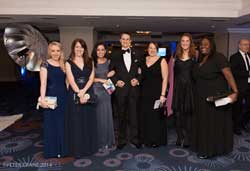 Young Generation Network guests dress to impress at the Annual Dinner |
|
|
http://www.euronuclear.org/e-news/e-news-47/hungary.htm

The Hungarian Nuclear Society (HNS) regularly organizes its scientific-technical symposium on nuclear techniques. In December 2015, the symposium was held in Paks, close to the Hungarian NPP. The meeting in the Grand Hotel Erzsébet was attended by about 100 participants. There were many experts from the NPP, scientists from research organizations, representatives of the regulatory body and industrials companies, students and teachers from universities and high schools. The programme of the symposium included 28 plenary presentations and a round table panel discussion with Hungarian experts on the subject of fuel handling and transport. The presentations covered many interesting areas:
 |
 |
 |
 |
The annual awards of the HNS were handed over during the symposium. The winners are normally asked to give a lecture at the end of the ceremony. The lectures of the 2014 award winners covered the following topics:
Lászó Csatári (Öveges award): Use of Geiger-Müller counters in high school physics
Máté Szieberth (Fermi award): Monte Carlo methods for the investigation of subcritical systems
József Elter (Leó Szilárd award): Generation III safety in a Generation II NPP
István Pusztai (Károly Simonyi award): Kinetic transport models for magnetic fusion systems
The next annual symposium of the HNS will be held in Budapest, in December 2015.
http://www.euronuclear.org/e-news/e-news-47/ni-big-bang-fair.htm


Nuclear Institute – Press Release
Tuesday 6th January 2015: FOR IMMEDIATE RELEASE
The Nuclear Institute will be exhibiting at the Big Bang Fair, the UK's largest celebration of science and engineering, in support of showing young people the exciting world of STEM (Science, Technology, Engineering and Mathematics).
The event is to be held at the Birmingham NEC on 11-14 March 2015 and is primarily aimed at to 7-19 year-olds.
The Nuclear Institute, in collaboration with the Engineering Construction Industry Training Board (ECITB), will be hosting a fun and interactive stand with activities to show off some of the unique challenges and technology involved in nuclear energy, including remote handling a wire buzzer (with a nuclear twist of course), competitive racing with ROVs (remotely operated vehicles), a nuclear reactor simulator, and online games accessed via a Careers App. The ECITB in conjunction with Rapport Theatre Ltd is also running its highly successful Theatre-in-Education workshops to engage young people in thinking about career routes into Engineering Construction.
Mark Lyons, Trustee and Chair of the Education & Training Committee at the Nuclear Institute said: "This is a great opportunity for us to engage with students on the benefits of nuclear energy and the exciting careers that are available in our industry. The NI has an active educational and public outreach programme across the UK and through this we are aiming to enthuse the next generation of nuclear scientists and engineers and promote career options in conjunction with our colleagues from the ECITB. The nuclear industry stands at the beginning of a time of key growth to support the major programmes across new nuclear power build, decommissioning and defence."
Young people will come face-to-face with the basic aspects of nuclear energy in order to show how interesting the subject can be.
Visitors will also have the opportunity to meet Nuclear Institute members and be informed about possible careers choices in the industry.
Last year the fair saw an attendance of 75,000 at the four-day event with even larger crowds expected in 2015 to include school and community groups, teachers and families.
The Big Bang is a nationwide programme of national, regional and local events led by EngineeringUK aiming to engage and reward young minds with STEM backgrounds and to build a bright future for the UK’s economy.
The Nuclear Institute understands and is a representative of the UK’s nuclear sector.
To find out more about The Big Bang Fair, and to book your place, visit www.thebigbangfair.co.uk
http://www.euronuclear.org/e-news/e-news-47/nia-award.htm


11/12/2014
Press release: for immediate release
The Nuclear Institute awarded prizes to Natalie Baines (Nuvia Ltd), Mathew McKay (Rolls-Royce Plc) and Lynsay Kelly (Sellafield Ltd), last weekend, as upcoming young people in the nuclear industry.
Natalie Baines was selected as winner of the NI Young Technician/Apprentice Award as a rising star in the industry and for displaying excellence in her role at Nuvia Ltd.
Natalie Baines said: "I am honoured to receive such an award in a highly challenging industry. I hope that this achievement will further inspire others who wish to pursue a career within the Nuclear Industry and in Engineering."
Natalie is also helping to mentor others as she progresses in her career.
Mathew McKay received the NI Young Professionals Award for the success he has achieved in the last ten years since beginning his career at Rolls-Royce Plc.
Mat joined Rolls-Royce as an apprentice in 2004 and has rapidly progressed through the organisation in increasingly senior roles as part of the Engineering High Potential Scheme.
Mat McKay said: "I’m hugely honoured to be selected as the Nuclear Institute’s Young Professional for 2014. Throughout my ten year career at Rolls-Royce I’ve been given vast opportunities to develop and progress my career in the nuclear sector, whilst allowing me to truly embed the key principles of the Nuclear Delta in my approach to day-to-day life.
"My message to those in the early stage of their nuclear journey is that with the right focus, ambition and mentorship there are no limits to how far you can take your career in this exciting industry."
Both Mat and Natalie were presented with certificates for their awards by NI President Tim Chittenden at the NIA NI Annual Dinner on Thursday evening 4th December.
Lynsay Kelly collected the annual Jack Edwards Prize at the Sellafield Excellence Awards Dinner on Friday 5th December which was awarded to her for outstanding performance in her role as a control systems engineer at Sellafield.
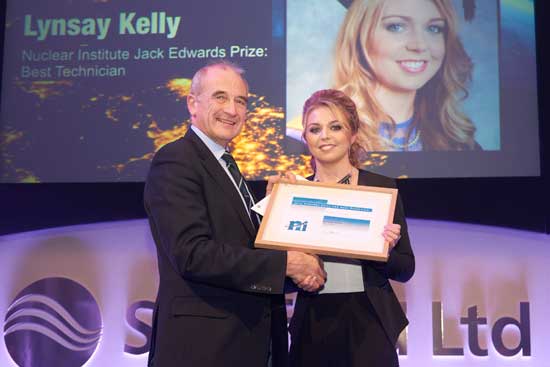
Lynsay Kelly said: "It was overwhelming to find out that I had won the Jack Edwards prize, I was so happy when I got the news. I am thankful to Sellafield for supporting me through my personal development and it's great to see my hard work paying off. I feel, with the support of the company, I have put myself at an advantage early on in my career."
Success clearly runs in the family as Lynsay's sister Stephanie, also at Sellafield Ltd, won Apprentice of the Year at this year's Golden Apple Awards.
The Jack Edwards Prize has been awarded to outstanding individuals since 2004, whereas the NI Young Technician/Apprentice Award and the NI Young Professional Award are both new for 2014.
http://www.euronuclear.org/e-news/e-news-47/kozloduy.htm

The Young Generation Network of the Romanian Nuclear Energy Association (RYG-AREN) recently organized a technical visit and study trip to the neighbouring Kozloduy NPP, in Bulgaria.
“Our objective for 2014 was to continue the positive relationship we have with young nuclear specialists from Kozloduy NPP and to further our cooperation with Bulgaria”, declared Gabriel Pavel, Chairman of Romanian Young Generation Network.
The members of the Bulgarian Nuclear Association visited two nuclear sites in Romania in the autumn of 2013: the Cernavoda NPP and the Pitesti nuclear fuel fabrication plant. This initiative opened up the possibility of future such cooperation and mutual visits.
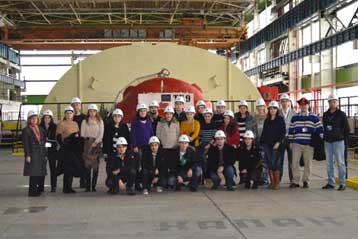
“Apart from the main objective of learning about other NPPs and their operation - such as Kozloduy NPP, which uses a different technology to the one used at Cernavoda - we were interested in increasing the participation and involvement of our own members. RYG members work for different institutions around the country and by getting to know each other better we will be able to do so even more efficiently on future projects”, added Gabriel Pavel. The participants in the technical visit work for various organizations, such as the Center for Technology and Engineering for Nuclear Projects (CITON), SN Nuclearelectrica SA, The Politechnica University of Bucharest and Cernavoda nuclear power plant.
The technical visit started with a brief presentation of the history of the NPP, which celebrates nearly 40 years of operation, followed by a tour of the turbine hall, the main control room and the electric switchyard. Throughout the visit the specialists from Kozloduy NPP answered the questions put to them by the Romanian young engineers, fuelling their curiosity to learn more about VVER - 1000 technology.
After the visits organized in 2012 to Zwetendorf NPP (Austria) and to Paks NPP (Hungary), this was the second international cooperation project initiated by the Romanian Young Generation Network with similar organizations from other countries.
The success of these activities wouldn’t have been possible without the constant support of the Romanian Atomic Forum „ROMATOM” and of SN Nuclearelectrica SA, which are always receptive to the initiatives of RYG. The two entities agreed to offer their support from the very beginning of the cooperation process between Romania and Bulgaria, believing that their support contributes to the motivation and training of the young nuclear specialists.
“We are pleased to note the enthusiasm raised by this project among the young members. We would like to thank our hosts from the Bulgarian Nuclear Association for their effort in organizing the trip. We wish to further develop the close cooperation that we have enjoyed with other European networks, and hope to increase the motivation of the younger generation and improve our knowledge of other nuclear technologies”, stated Livia Chitu, Vice Chairwoman of RYG.
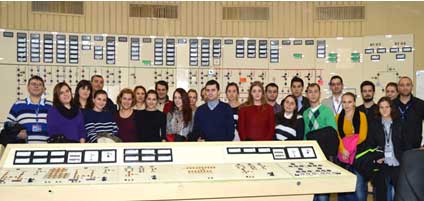
http://www.euronuclear.org/e-news/e-news-47/rom-energy-council.htm

Young members of the Romanian Nuclear Energy Association (RYG – AREN), along with those of the VLER (Romanian Future Energy Leaders - RFEL) programme – which is part of the Romanian Energy Council – recently launched their first joint project: a scientific seminar on the topic Nuclear energy and the energy mix. It took place in early November 2014. During three hours, the amphitheater Acad. Martin Bercovici, of ISPE Headquarters, witnessed the thirst for knowledge and curiosity of the visiting students from Bucharest, who attended this, the first ever, educational project of its kind dedicated to energy topics. |
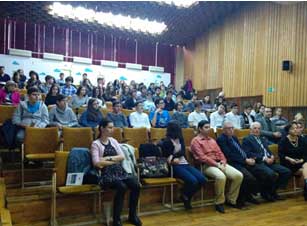 |
“We wanted to create an educational programme that would raise the awareness of the young generation of energy in general, and of energy sources and their impact on the environment in particular. During the seminar we were able to facilitate the transfer of knowledge between national energy sector specialists and the young Romanian audience. We were also able to communicate detailed and accurate information about energy, outline some positive impacts on the environment and, above all, to highlight the new reality created by recent EU energy policy initiatives and Directives,” stated Gabriel Pavel, Chairman of RYG.
Among the specialists who responded positively to this initiative to speak to young students about energy were Acad. Dr. Ionut Purica, Dr. Virgil Musatescu and Dr. Ruxandra Sapoi. Their presentations captured the attention of the more than 80 high-school students from Bucharest, who attended the seminar with their physics, biology and chemistry teachers.
“We are pleased to note the enthusiasm generated among the participants by this joint AREN-YG – VLER project. The most important thing of all is that they all learnt how and where nuclear energy is produced and had the opportunity to see and assemble a fuel bundle mock-up. As of today, they now know the advantages and disadvantages of various energy sources. The success of this seminar, together with the positive feedback that was received, encourages us to repeat the event in the future and to meet students’ curiosity and desire for knowledge with new attractive and initiatives that reflect important topics. These will be complemented by practical exercises and demonstrations |
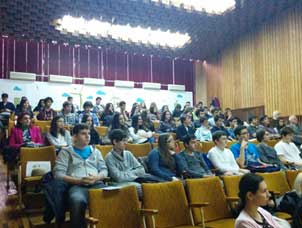 |
from experts in the field”, stated Livia Chitu, Vice Chairwoman of RYG, who is also a member of the RFEL programme.
“When we proposed to RFEL members that they work together on this project we felt it was our duty to compensate in some way the lack of clear, concise and professional information on energy, nuclear energy or energy options and new global trends. We are living in a constantly changing world, and information is considered to be the most precious of all commodities.
Where there are gaps, we can provide support and we can facilitate dialogue to overcome them”, added Mr. Pavel.
http://www.euronuclear.org/e-news/e-news-47/ygn-report.htm

|
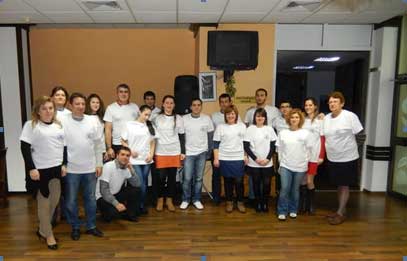
From 5-7 December 2014, the Young Generation Network of the Bulgarian Nuclear Society organised a workshop entitled 15 years of the YGN – are we still young? It took place to mark the 15th anniversary of the establishment of YGN. The event was also inspired by the celebration of another milestone –40 years of successful operation by Kozloduy NPP Plc.
One of the main objectives of the event was to provide a platform for knowledge transfer from senior experts to the younger generation, thereby contributing to broadening the youngsters’ competence and enhancing their professionalism.
The workshop’s programme featured presentations from representatives of WIN-Bulgaria, Kozloduy NPP Plc., the Institute of Nuclear Research and Nuclear Energy of the Bulgarian Academy of Sciences, Young Nuclear Specialists and the Veterans in Nuclear Industry Association.
Iskren Cvetkov
Chairman of Belgian Nuclear Society’s Young Generation Network (BgNS YGN)
http://www.euronuclear.org/e-news/e-news-47/ENYGF-2015.htm


ENYGF is an event organized for young professionals of the Nuclear sector from all over the world. The 2015 edition will be held in France and dedicated to Nuclear & Enviroment in order to share our ideas of Nuclear's role in the nergy mix and Climate Change.
http://www.euronuclear.org/e-news/e-news-47/l-3.htm

MONTREAL, November 18, 2014 – L-3 MAPPS announced today that it participated in the official opening of EDF Energy’s upgraded Heysham 1 plant training simulator on October 22, 2014 in Lancashire, United Kingdom (U.K.). The ceremony was attended by numerous EDF Energy representatives, including Mark Gorry, EDF Energy’s Region 1 chief nuclear officer, and Ian Stewart, Heysham 1’s station director. L-3 MAPPS was represented by Michael Chatlani, vice president of marketing & sales.

“EDF Energy and L-3 MAPPS have collaborated on numerous simulator renovation projects for 14 years at four of our U.K. stations, and in every case, we achieved extraordinary success,” said Mark Gorry. “These renovation projects are key to ensuring that our training simulators are best-in-class. The relationship between our two companies is a model for what good customer-supplier relationships and the resulting successes should look like.”
“The upgrade to simulate both reactors helps my operators train on all different types of plant operation in a very representative and realistic environment,” said Ian Stewart. “I’d like to thank everyone involved in delivering this project, which has been a positive and significant investment in our training facilities.”
“This latest Heysham 1 simulator upgrade was rolled out in three phases, each of which was delivered ahead of schedule and on budget,” said Michael Chatlani. “The success of this project was largely a result of the open communications between the two project teams and their ability to quickly resolve issues as they arose.”
L-3 MAPPS had previously ported the legacy simulator to a Windows platform and replaced the thermal-hydraulic and core neutronics models with L-3’s ANTHEM™ and Comet Plus™. In the first phase of this latest upgrade, L-3’s previous generation of simulation software development and maintenance tools was replaced with a subset of L-3’s Orchid® products, including the Orchid Simulator Executive, Orchid Configuration Manager, Orchid Instructor Station, Orchid Network Loader, Orchid Modeling Environment and Orchid Graphic Editor. This phase was declared “Ready For Training” (RFT) in January 2013.
In the second phase, the simulator’s legacy balance of plant and electrical system models were replaced with higher-fidelity models developed with Orchid Modeling Environment. Phase 2 was RFT in February 2014.
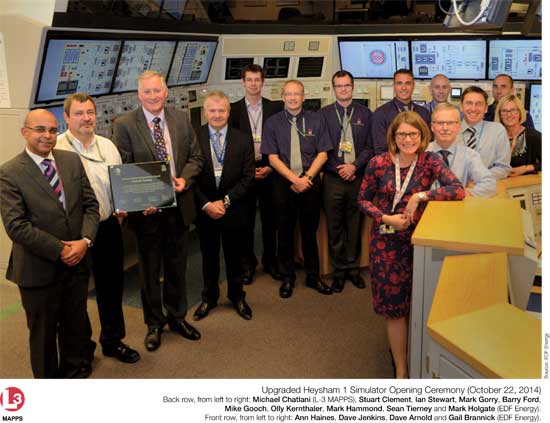
The third phase involved expanding the legacy simulator to incorporate both Reactor 1 and Reactor 2 control desks, resulting in a fully integrated dual-unit control room simulation environment. The plant models were modified to support both operator desks and related common services. Phase 3 was RFT in October 2014.
EDF Energy is one of the U.K.’s largest energy companies and its largest producer of low-carbon electricity. It is a wholly owned subsidiary of the EDF Group, one of Europe’s largest energy groups. EDF Energy generates approximately one-fifth of the U.K.’s electricity and employs around 15,000 people. The Heysham 1 Power Station started generation in July 1983 and is made up of two Advanced Gas-cooled Reactors (AGRs) with electrical output of 1,160 megawatts. The Heysham 1 plant and simulator are located on the northwest coast of England. AGRs are unique to the U.K.
L-3 MAPPS has over 30 years of experience in pioneering technological advances in the marine automation field and over 40 years of experience in delivering high-fidelity power plant simulation to leading utilities worldwide. In addition, the company has more than four decades of expertise in supplying plant computer systems for Canadian heavy water reactors. L-3 MAPPS also provides targeted controls and simulation solutions to the space sector. To learn more about L-3 MAPPS, please visit the company’s website at www.L-3com.com/MAPPS.
Headquartered in New York City, L-3 employs approximately 48,000 people worldwide and is a prime contractor in aerospace systems and national security solutions. L-3 is also a leading provider of a broad range of communication and electronic systems and products used on military and commercial platforms. The company reported 2013 (revised) sales of $12.6 billion. To learn more about L-3, please visit the company’s website at www.L-3com.com.
# # #
ANTHEM, Comet Plus and Orchid are trademarks of L-3 Communications MAPPS Inc. All other products are trademarks of their respective companies.
http://www.euronuclear.org/e-news/e-news-47/nrg.htm


Petten, December 31, 2014
Yesterday, NRG has completed the multiyear qualification irradiation project of the China-manufactured fuel for use in the HTR-PM reactor, which is being constructed in the Shan Dong province of China. This high temperature resistant fuel consists of small coated fuel particles contained in 6 cm diameter pebbles. The irradiation results have shown very good behavior during the customized irradiation in the High Flux Reactor, Petten, The Netherlands, operated by NRG.
HTR-PM is a world-first modular full-scale high temperature gas-cooled reactor demonstration plant and is one of the 16 key projects in the Chinese national medium- and long-term (2006-2020) science & technology development program. This plant is located at Shidao Bay, Weihai, China. The first concrete of HTR-PM was poured in December 2012.
HTR-PM is an innovative nuclear reactor system with enhanced safety characteristics and high energy efficiency. It is an optimized and innovative design using Chinese engineering and manufacturing capability, based on extensive Chinese and world experience in High Temperature Gas-cooled Reactor technology.
NRG has decades of experience with the controlled irradiation and examination of fuel and materials for HTR reactors. The HTR fuel is irradiated in the High Flux Reactor, and the behavior is monitored during the irradiation. Next to extensive fuel irradiation expertise, NRG is world leading with regards to graphite irradiation and examination. This is the case for HTR applications but also for the graphite currently applied in British power reactors, as basis for their long term operation safety cases.
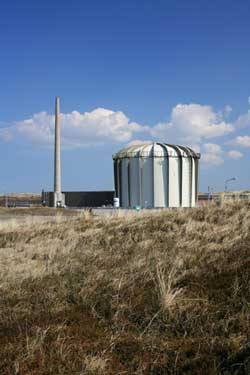
http://www.euronuclear.org/e-news/e-news-47/rosatom.htm


ATOMEXPO International Forum is the largest exhibition venue for meetings and negotiations between world leaders of the nuclear power sector.
ATOMEXPO’2015, 7th International Forum will be held from June 1 - 3, 2015 in Moscow at the Gostiny Dvor Exhibition Center at 4 Ulitsa Ilyinka. On the eve of the Forum, on May 31, 2015, a business regatta will take place to allow the leaders of the nuclear power industry to take part in team competitions and communicate in an informal setting.
The goal of the Forum is to promote international cooperation between the Russian Federation and the countries of Latin America, Pacific Asia, Africa, Central and Eastern Europe in the field of nuclear power, and to discuss Russia’s proposal on developing national energy programs.
Over the past six years the Forum has become an internationally-recognized discussion venue that focuses on discussion of important issues of the nuclear power sector, and the trends of its further development.
The Forum has traditionally included an exhibition of leading Russian and international companies of the nuclear power sector and an extensive business program with the participation of heads of corporations, top managers of international companies, and international-level experts.
Participation in the Forum will help promote business interests on the nuclear power market, and stimulate further development of participating companies.
More information on the website www.2015.atomexpo.ru/eng/main
http://www.euronuclear.org/e-news/e-news-47/show-some-emotion.htm

Recent polls on the public acceptance of nuclear power have been encouraging. Take for example the Special Eurobarometer 297 survey, published in June. This found 44% of European Union citizens in favour of energy production by nuclear power stations, compared with 45% opposed (see NEI August 2008, p32-33). And in the UK, a November poll by Ipsos MORI on behalf of the Nuclear Industry Association (NIA) showed that 65% of the UK public support nuclear as part of a balanced energy mix while just 10% are against it.
published in NEI magazine January 2009
http://www.euronuclear.org/e-news/e-news-47/wano.htm

WANO Nuclear Safety Scholarships now accepting entries
London,
06/10/2014
WANO is pleased to announce that we are now accepting entries for the WANO Nuclear Safety Scholarships for students aged 25 and under who are pursuing a career in nuclear power generation.
Four scholarships will be awarded at a value of £2,500 each and the winners will be WANO's special guests at our 2015 Biennial General Meeting in Toronto, Canada.
Please download our ![]() Scholarship Entry Form.pdf and return it to scholarship@wano.org by the entry deadline of 31 January 2015.
Scholarship Entry Form.pdf and return it to scholarship@wano.org by the entry deadline of 31 January 2015.

http://www.euronuclear.org/e-news/e-news-47/Euterp.htm

The next EUTERP Workshop will take place in Athens from September 30 till October 2, 2015.
More details can be found on the Workshop website.
Workshop Objectives :
The European Commission formally adopted the new Basic Safety Standards (BSS) Directive (2013/59/Euratom), on December 5, 2013. This new Directive, which lays down the basic safety standards for protection against the dangers arising from exposure to ionising radiation, repealed the previous BSS and also incorporated the requirements of previous Directives on outside workers, medical exposures, high activity sealed sources, and public information in the event of a radiological emergency. The new BSS has also incorporated the EC's recommendations of February 21, 1990 on the protection of the public against indoor exposure to radon. The importance of education and training in radiation protection is emphasized in a new chapter detailing education, training and information requirements.
Member States are required to bring into force the laws, regulations and administrative provisions necessary to comply with the new BSS Directive by February 6, 2018. This will be a challenge, requiring changes to national legislation, major revision of training activities and new approaches to the qualification and recognition of Radiation Protection Experts and Medical Physics Experts.
New and amended requirements in the BSS cover a range of subjects including:
The roles of the RPE and RPO
Revised dose limit for the lens of the eye
Radon: action plans and dose coefficients
Outside workers
Emergency response arrangements
Non-medical imaging
Air-crew
Medical exposure
The workshop will focus on the required changes in legislation in the European Union and the associated training implications. The potential impact in different Member States will be discussed and best practice solutions to issues will be explored.
http://www.euronuclear.org/e-news/e-news-47/other-conferences.htm


April 2015
Saint-Petersburg, Russia
more
5 May 2015 2015
Belgian Nuclear Research Centre, Mol, Belgium
more
5 - 7 May 2015
Estrel Convention Center Berlin, Germany
more
![]()
17 - 21 May 2015
Makuhari Messe
Chiba, Japan
more

19 - 21 May 2015
Oxford Hotel, Oxford, United Kingdom
more
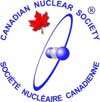
31 May - 3 June 2015
Saint John, NB, Canada
more

1 - 3 June 2015
Moscow, Russia
more

7 - 11 June 2015
Grand Hyatt San Antonio, San Antonio, TX, USA
more

17 - 19 June 2015
Delta Meadowvale Hotel and Conf. Centre, Mississauga,Ontario, Canada
more
22 - 25 June 2015
Paris, France
more

2 - 5 September 2015
laguna Beach Resort, Sozopol, Bulgaria
more
![]()
14 - 17 September 2015
Portorož, Slovenia
more

19 - 21 October 2015
Ramada Parc Hotel, Bucharest, Romania
more
http://www.euronuclear.org/e-news/e-news-47/Member-Societies.htm

Austrian
Nuclear Society |
Belgian
Nuclear Society |
Bulgarian
Nuclear Society |
Croatian
Nuclear Society |
Czech Nuclear Society |
Finnish
Nuclear Society |
French
Nuclear Energy Society (SFEN) |
German
Nuclear Society (KTG) |
Hungarian
Nuclear Society |
The
Israel Nuclear Society |
Italian
Nuclear Association |
Lithuanian
Nuclear Energy Association |
Netherlands Nuclear Society |
The Nuclear Institute |
Nuclear
Society of Russia |
Nuclear
Society of Serbia |
Nuclear
Society of Slovenia |
Polish
Nuclear Society |
Romanian
Nuclear Energy Association (AREN) |
Slovak
Nuclear Society |
Spanish
Nuclear Society |
Swedish
Nuclear Society |
Swiss
Nuclear Society |
http://www.euronuclear.org/e-news/e-news-47/Corporate-Members.htm
Links to ENS Corporate Members |
Aachen Institute for Nuclear Training GmbH |
Alpiq Suisse Ltd. |
Andritz AG |
Ansaldo Nucleare S.p.A |
AREVA NP GmbH |
Atomic Energy Council (AEC) |
Atomexpo LLC |
Atomtex SPE |
BKW FMB Energie AG |
Chilean Nuclear Energy Commisssion |
Electrabel GDF Suez |
NV Elektriciteits-Produktiemaatschappij
Zuid-Nederland EPZ |
E.O.N Kernkraft GmbH |
Electricité de France (EDF), Communication Division |
Elektroinstitut Milan Vidmar |
ENUSA Industrias Avanzadas SA |
EXCEL Services Corporation |
GE Hitachi Nuclear Energy International |
IEA of Japan Co. Ltd |
Kernkraftwerk Gösgen-Däniken
AG |
Kernkraftwerk Leibstadt AG (KKL), |
L-3 Communications MAPPS Inc. |
Linn High Therm GmbH |
MVM Paks Nuclear Power Plant Ltd |
NRG |
NUKEM Technologies GmbH |
ONET TECHNOLOGIES |
Paul Scherrer Institute |
SKB (Swedish Nuclear Fuel and Waste Management
Company) |
|
Studiecentrum voor Kernenergie, Centre d’Etude
de l’Energie Nucléaire SCK-CEN |
SVS FEM |
Synatom |
Teollisuuden Voima Oyj / Industrial Power
Company Ltd (TVO) |
Tractebel Engineering S. A. |
UNESA |
UniTech Services B.V. |
Urenco Limited |
Vattenfall AB |
VNS – Vinçotte Nuclear Safety |
VTT Nuclear |
Westinghouse Electric Company |
World Association of Nuclear Operators
(WANO), |
http://www.euronuclear.org/e-news/e-news-47/editorial.htm

Editorial Staff:
Mark O’Donovan, Editor-in-Chief
Contributors to this Issue:
Stéphane Bresson (Nucleopolis, France)
Noel Carmarcat (ENS)
Michèle Coeck (SCK.CEN, Belgium)
Iskren Cvetkov (BgNS YGN, Bulgaria)
Kirsten Epskamp (ENS)
Isabelle Jouette (SFEN, France)
Alain Michel (Groupe Esperluète, Belgium)
Sophie Missirian (YGN, France)
Dirk Ryckbosch (Ghent University, Belgium)
Petra van Mulders (Vrije Universiteit Brussel, Belgium)
Nick van Remortel (University of Antwerp, Belgium)
Eric van Walle (SCK.CEN, Belgium)
Realisation:
Marion Brünglinghaus
Avenue des Arts 56, BE-1000 Brussels
Phone +32 2 505 30 50 - Fax: +32 2 502 39 02
E-mail: info@euronuclear.org - http://www.euronuclear.org
The ENS News is a quarterly publication, in electronic
form only.
Copyright notice ©2015 European Nuclear Society.
Reproduction is authorised provided that the ENS News is acknowledged as the
source – except where otherwise stated.
![]()
© European Nuclear Society, 2015